
The Gateway to the Uluguru Mountains: Morogoro, Tanzania
Discover Morogoro, Tanzania: A picturesque city at the foot of the Uluguru Mountains, offering natural beauty, rich culture, and a gateway to Tanzania's wildlife wonders.
Nestled at the base of the majestic Uluguru Mountains, Morogoro offers a unique blend of natural beauty, cultural heritage, and vibrant local life. This city, often referred to as the 'Garden of Tanganyika,' is a hidden gem that invites tourists to explore its scenic landscapes and immerse themselves in the rich Swahili culture. Nature enthusiasts will find Morogoro a paradise, with its lush green surroundings, abundant wildlife, and numerous hiking trails. The Uluguru Mountains provide a stunning backdrop and offer challenging treks for adventurous travelers. Along the way, hikers can enjoy breathtaking views, waterfalls, and unique flora and fauna. The city itself is a bustling hub of activity, with colorful markets, historic buildings, and friendly locals. The Sokoine University of Agriculture adds a youthful energy to the city, making it a great place to experience Tanzania's educational and agricultural advancements. Don't miss a visit to the local markets where you can sample fresh produce, spices, and handmade crafts. For those interested in history and culture, Morogoro is home to several colonial-era buildings and landmarks. The Lutheran Church and Boma Road are notable spots that reflect the city's colonial past. Additionally, the city is a gateway to several national parks, including Mikumi National Park, making it an ideal base for safaris and wildlife tours.
Local tips in Morogoro
- Visit the local markets early in the morning to experience the best selection of fresh produce and local crafts.
- Pack comfortable hiking shoes and gear if you plan to explore the Uluguru Mountains.
- Take a guided tour to learn about the history and significance of the colonial-era buildings.
- Stay hydrated and carry sufficient water while hiking or exploring the city.
- Consider visiting during the dry season (June to October) for the best weather conditions.
The Gateway to the Uluguru Mountains: Morogoro, Tanzania
Nestled at the base of the majestic Uluguru Mountains, Morogoro offers a unique blend of natural beauty, cultural heritage, and vibrant local life. This city, often referred to as the 'Garden of Tanganyika,' is a hidden gem that invites tourists to explore its scenic landscapes and immerse themselves in the rich Swahili culture. Nature enthusiasts will find Morogoro a paradise, with its lush green surroundings, abundant wildlife, and numerous hiking trails. The Uluguru Mountains provide a stunning backdrop and offer challenging treks for adventurous travelers. Along the way, hikers can enjoy breathtaking views, waterfalls, and unique flora and fauna. The city itself is a bustling hub of activity, with colorful markets, historic buildings, and friendly locals. The Sokoine University of Agriculture adds a youthful energy to the city, making it a great place to experience Tanzania's educational and agricultural advancements. Don't miss a visit to the local markets where you can sample fresh produce, spices, and handmade crafts. For those interested in history and culture, Morogoro is home to several colonial-era buildings and landmarks. The Lutheran Church and Boma Road are notable spots that reflect the city's colonial past. Additionally, the city is a gateway to several national parks, including Mikumi National Park, making it an ideal base for safaris and wildlife tours.
When is the best time to go to Morogoro?
Iconic landmarks you can’t miss
Cate Hotels - Morogoro
Experience the beauty of Morogoro at Cate Hotels, where comfort meets adventure in the heart of Tanzania's lush landscapes.

Morogoro Hotel
Discover comfort and nature at Morogoro Hotel, the ideal retreat in Tanzania’s beautiful Forest Area, perfect for relaxation and exploration.

Arc Hotel
Discover the welcoming Arc Hotel in Morogoro, where comfort meets convenience in the heart of Tanzania's stunning landscapes.

GM Hotel
Discover the heart of Morogoro at GM Hotel, where comfort meets local charm amidst Tanzania's scenic landscapes.

Mawenzi Market
Discover the heart of Morogoro at Mawenzi Market, where local culture, delicious food, and unique crafts come together in a bustling atmosphere.

Kibo Peak Palace Hotel
Discover comfort and adventure at Kibo Peak Palace Hotel in Morogoro, Tanzania, surrounded by the breathtaking Uluguru Mountains.

SUA university Botanic Garden
Explore the hidden gem of SUA University Botanic Garden in Morogoro, a peaceful retreat filled with diverse plant species and tranquil landscapes.

Red Chilli Restaurant
Experience authentic Tanzanian cuisine at Red Chilli Restaurant in Morogoro, where flavor meets culture in a vibrant atmosphere.

Tex Palace Bar
Experience the vibrant flavors of Tanzania at Tex Palace Bar in Morogoro, where local cuisine meets a welcoming atmosphere.

CHIEF KINGALU MARKET (Soko kuu la Chifu Kingalu)
Discover the lively Chief Kingalu Market in Morogoro, a vibrant destination for local crafts, fresh food, and an authentic Tanzanian experience.

The 88 Restaurant
Experience the vibrant flavors of The 88 Restaurant in Morogoro, where local and international cuisines come together in a delightful dining atmosphere.

Nane Nane
Discover the tranquil beauty of Nane Nane, a condominium complex in Morogoro, where comfort meets adventure amidst Tanzania's stunning landscapes.

Choma Waterfalls
Discover the breathtaking beauty of Choma Waterfalls in Mikumi National Park, where nature's serenity meets adventure in Tanzania.

Morogoro Bus Stand
Discover the vibrant Morogoro Bus Stand, your gateway to Tanzania's stunning landscapes and rich cultural experiences.
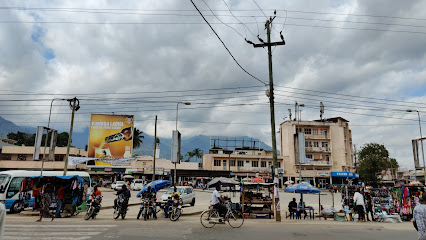
Chilunga Cultural Tourism
Immerse yourself in the vibrant heritage of Morogoro at Chilunga Cultural Tourism, where culture, crafts, and community come alive.

Unmissable attractions to see
Mikumi National Park
Discover the vibrant wildlife and scenic landscapes of Mikumi National Park, a premier destination for nature lovers and adventure seekers in Tanzania.

Nyumbani Park (Samaki Spot)
Discover the serene beauty and local flavors at Nyumbani Park, Morogoro's hidden gem for relaxation and cultural immersion.

SUA university Botanic Garden
Explore the lush landscapes and diverse flora of SUA University Botanic Garden, a tranquil oasis in Morogoro, Tanzania.

Choma Waterfalls
Discover the breathtaking Choma Waterfalls in Mikumi National Park, a serene escape with swimming and stunning natural beauty.

Chilunga Cultural Tourism
Experience the rich cultural heritage and scenic beauty at Chilunga Cultural Tourism in Morogoro, Tanzania, a must-visit for every traveler.

Safaris Partners
Explore Tanzania’s breathtaking wildlife and rich culture with Safaris Partners, your trusted tour operator in Morogoro.
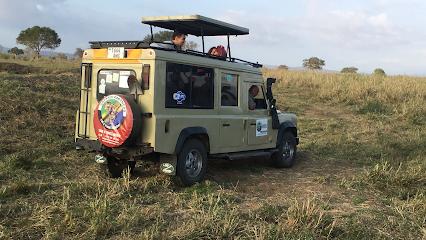
Bondwa Peak
Discover the breathtaking beauty and diverse ecosystems of Bondwa Peak, a must-visit nature preserve in Tanzania.

Sabasaba Garden Park
Discover the serene beauty of Sabasaba Garden Park, a lush oasis in Morogoro, Tanzania, perfect for relaxation, picnics, and photography.

MAZI
Explore the vibrant art and ecology at MAZI, a must-visit attraction in Choma, Morogoro, blending culture, community, and creativity.

THE GALAXY RECREATIONAL
Experience nature's beauty at The Galaxy Recreational in Morogoro, a perfect blend of relaxation, dining, and family fun.

Jahazi Garden
Experience the serene beauty of Jahazi Garden in Morogoro, a lush oasis perfect for relaxation, family outings, and nature appreciation.

Uluguru
Explore the breathtaking beauty and rich culture of the Uluguru Mountains, a must-visit destination in Tanzania for nature lovers and adventurers.

Africasana Tours and Safaris Company
Explore Tanzania's breathtaking landscapes and vibrant wildlife with Africasana Tours and Safaris, your premier travel partner in Morogoro.
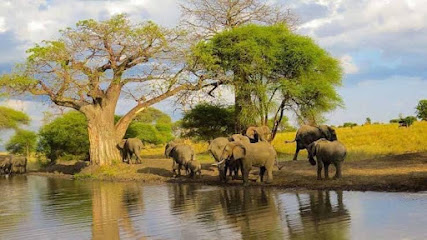
Kingi Stoni
Discover the beauty and tranquility of Kingi Stoni, a serene park in Morogoro perfect for relaxation, picnics, and enjoying nature's wonders.

Ritungu Tours & Safari Ltd
Discover the untouched beauty of Tanzania with Ritungu Tours & Safari Ltd, your expert guide to unforgettable wildlife adventures in Morogoro.
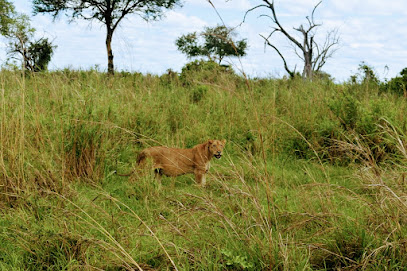
Essential places to dine
Black And White
Experience the culinary delights at Black And White Restaurant in Morogoro - where local flavors meet international cuisine.

Red Chilli Restaurant
Experience the rich flavors of Tanzanian cuisine at Red Chilli Restaurant in Morogoro - where every meal is a celebration.

Tex Palace Bar
Experience the heart of Tanzanian cuisine at Tex Palace Bar in Morogoro - where local flavors meet vibrant ambiance.

Kitungwa Restaurant
Experience authentic Tanzanian flavors at Kitungwa Restaurant in Morogoro - a culinary gem serving delicious local cuisine.

Al Baluch Bbq House And Restaurant
Experience the vibrant taste of Tanzania at Al Baluch Bbq House And Restaurant – where every meal is a celebration of local flavors.

Rock Garden
Savor authentic Tanzanian cuisine at Rock Garden in Morogoro—where every meal is a celebration of flavor and hospitality.

Top Life Bar and Resturant
Experience delightful Tanzanian flavors at Top Life Bar and Restaurant in Morogoro – where every meal is a celebration!

Royal Garden
Experience authentic Tanzanian flavors at Royal Garden - where delicious grilled dishes meet warm hospitality in Morogoro.

MtoMawe
Discover MtoMawe: A Culinary Oasis in Morogoro Offering Authentic Tanzanian Cuisine and Unforgettable Dining Experiences.

Tengoz Restaurant
Experience authentic Tanzanian flavors at Tengoz Restaurant in Morogoro - where every meal tells a story.

Mji kasoro Fast Food
Experience authentic Tanzanian fast food at Mji kasoro in Morogoro - where every meal is a celebration of local flavors.

GIGAS PANDA Chinese Restaurant
Discover authentic Chinese flavors at GIGAS PANDA in Morogoro – where tradition meets taste in every dish.

REJOYCE RESTAURANT
Experience authentic Tanzanian flavors at Rejoyce Restaurant in Morogoro—where every dish tells a story.
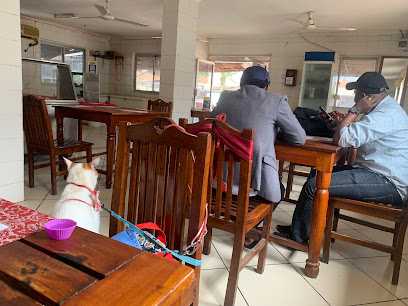
Uhuru park
Discover serenity at Uhuru Park: Morogoro's peaceful retreat filled with lush greenery and vibrant local culture.

Suzzy restaurant and coffee shop
Discover Suzzy Restaurant and Coffee Shop in Morogoro – where local flavors meet international delights in a cozy atmosphere.
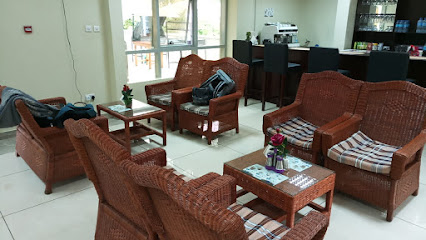
Markets, malls and hidden boutiques
c4_closet
Explore fashionable clothing and unique accessories at c4_closet in Morogoro, showcasing the vibrant culture of Tanzania.
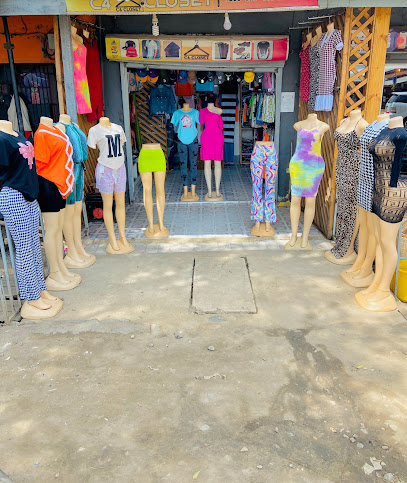
Little more
Explore Little More in Morogoro, a shopping mall offering a delightful fusion of local and international brands, dining experiences, and entertainment.

GIFT QUALITY&WEDDING WEAR SHOP
Explore the finest selection of clothing and wedding wear at Morogoro's Gift Quality & Wedding Wear Shop, where elegance meets tradition.

Bestman Boutique
Explore Bestman Boutique in Morogoro for a blend of traditional and contemporary Tanzanian fashion, offering unique styles for every occasion.

Gee Outfit Store Morogoro
Explore the vibrant styles of Tanzania at Gee Outfit Store Morogoro, where local culture meets contemporary fashion.

MAMA YUSUF SHOP
Explore the vibrant flavors and fresh produce of Morogoro at Mama Yusuf Shop, a local grocery store rich in culture and community spirit.

URBAN TRIM
Explore Urban Trim in Boma, Morogoro – your destination for unique and affordable Tanzanian fashion that celebrates local culture.

ROGERS MITUMBA SAFI SABASABA MOROGORO
Explore the vibrant thrift culture of Morogoro at Rogers Mitumba Safi Sabasaba, where unique fashion finds await every traveler.

High Class Baby Shop
Explore premium baby clothing at High Class Baby Shop in Morogoro, where style meets comfort for your little one.

SM SHOPPING CENTER
Experience the lively atmosphere and diverse offerings of the SM Shopping Center in Morogoro, a premier shopping destination for every traveler.

SENA SHOP
Explore SENA SHOP in Morogoro, Tanzania - a delightful bookstore offering a wide selection of local and international literature for every reader.

Style Haven
Discover the vibrant local fashion at Style Haven in Morogoro, where contemporary trends meet traditional craftsmanship for a unique shopping experience.

Mamyeddo Collection
Explore the vibrant Mamyeddo Collection in Morogoro for unique clothing that merges traditional Tanzanian culture with modern fashion.

PEACE STATIONARY
Explore unique home goods and stationery at Peace Stationary, a charming store in the heart of Morogoro, Tanzania.

DUKANI SHOPPING
Discover the vibrant Dukani Shopping in Morogoro, a supermarket offering local delicacies and everyday essentials for an authentic shopping experience.

Essential bars & hidden hideouts
Star Park lounge&Night Club
Experience the vibrant nightlife and delectable dining at Star Park Lounge & Night Club in Morogoro, Tanzania.

Beer O'clock
Experience the local beer culture in Morogoro at Beer O'clock, a vibrant pub with a friendly atmosphere and a great selection of brews.

Ipo Ipo Bar
Experience the vibrant nightlife of Morogoro at Ipo Ipo Bar, where refreshing drinks and local culture come together in a lively atmosphere.

Airport Classic Bar
Experience the charm of Airport Classic Bar at Kilombero Airport, where travelers can unwind with refreshing drinks and local flavors.
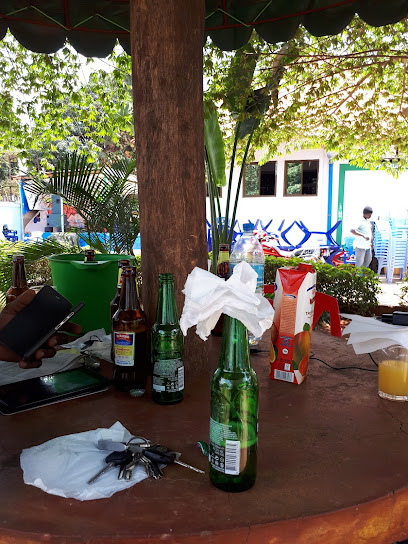
Idiva bar & Lodge
Discover the vibrant atmosphere of Idiva Bar & Lodge, a perfect blend of relaxation and local culture in Morogoro, Tanzania.

Zebra Bar
Experience the vibrant nightlife at Zebra Bar in Morogoro, offering refreshing drinks, local culture, and a lively atmosphere perfect for socializing.

Wallet Pub
Experience the vibrant nightlife of Morogoro at Wallet Pub, where local flavors meet a lively atmosphere in the heart of the city.

Equator Pub
Experience the vibrant local culture and delicious pub fare at Equator Pub in Morogoro, Tanzania's cozy gathering spot.

Elly Pub
Unwind at Elly Pub in Morogoro, where vibrant ambiance meets local culture for an unforgettable nightlife experience.

mHg Bar
Experience the best of Morogoro's nightlife at mHg Bar, where local charm meets refreshing drinks in a cozy atmosphere.

Terminal Pub
Discover the lively Terminal Pub in Morogoro, where local flavors meet a vibrant atmosphere for an unforgettable dining experience.
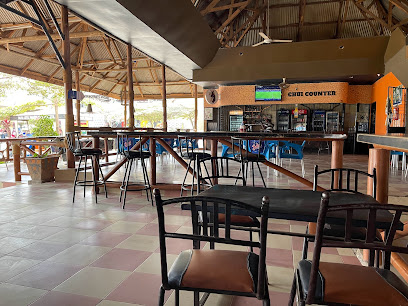
New E Pub
Discover the vibrant nightlife at New E Pub in Morogoro, where local drinks, friendly vibes, and unforgettable memories await you.

18 Pub Morogoro
Experience the vibrant nightlife and local culture at 18 Pub Morogoro, a must-visit bar for tourists in Tanzania.
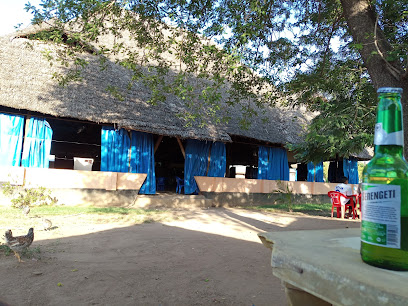
Nakite Bar and Hall
Discover nightlife at Nakite Bar and Hall in Morogoro, where vibrant culture meets refreshing drinks and lively entertainment.

Matengo PUB
Discover the vibrant local culture at Matengo PUB in Morogoro, where refreshing drinks and lively ambiance await every visitor.
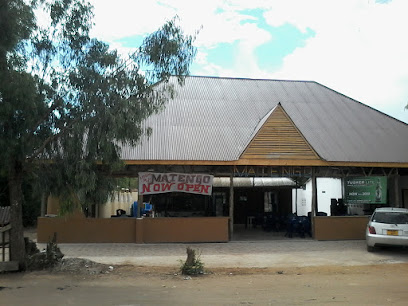
Local Phrases
-
- HelloJambo
[jahm-boh] - GoodbyeKwaheri
[kwah-heh-ree] - YesNdio
[n-dee-oh] - NoHapana
[hah-pah-nah] - Please/You're welcomeTafadhali
[tah-fah-dhah-lee] - Thank youAsante
[ah-sahn-teh] - Excuse me/SorrySamahani
[sah-mah-hah-nee] - How are you?U hali gani?
[oo hah-lee gah-nee] - Fine. And you?Nzuri. Na wewe?
[n-zoo-ree. nah weh-weh] - Do you speak English?Unasema kiingereza?
[oo-nah-seh-mah keen-geh-reh-zah] - I don't understandSielewi
[see-leh-wee]
- HelloJambo
-
- I'd like to see the menu, pleaseNataka kuona menyu, tafadhali
[nah-tah-kah koo-oh-nah meh-nyoo, tah-fah-dhah-lee] - I don't eat meatSili nyama
[see-lee nyah-mah] - Cheers!Mambo!
[mahm-boh] - I would like to pay, pleaseNataka kulipa, tafadhali
[nah-tah-kah koo-lee-pah, tah-fah-dhah-lee]
- I'd like to see the menu, pleaseNataka kuona menyu, tafadhali
-
- Help!Msaada!
[msah-ah-dah] - Go away!Nenda zako!
[nen-dah zah-koh] - Call the Police!Piga simu polisi!
[pee-gah see-moo poh-lee-see] - Call a doctor!Piga simu daktari!
[pee-gah see-moo dahk-tah-ree] - I'm lostNimepotea
[nee-meh-poh-teh-ah] - I'm illNinaumwa
[nee-nah-oom-wah]
- Help!Msaada!
-
- I'd like to buy...Nataka kununua...
[nah-tah-kah koo-noo-noo-ah] - I'm just lookingNatazama tu
[nah-tah-zah-mah too] - How much is it?Bei ni kiasi gani?
[beh-ee nee kee-ah-see gah-nee] - That's too expensiveHilo ni ghali sana
[hee-loh nee gah-lee sah-nah] - Can you lower the price?Unaweza kupunguza bei?
[oo-nah-weh-zah koo-poon-goo-zah beh-ee]
- I'd like to buy...Nataka kununua...
-
- What time is it?Saa ngapi?
[sah-ah ngah-pee] - It's one o'clockSaa moja
[sah-ah moh-jah] - Half past (10)Nusu ya (kumi)
[noo-soo yah (koo-mee)] - MorningAsubuhi
[ah-soo-boo-hee] - AfternoonMchana
[m-chah-nah] - EveningJioni
[joh-nee] - YesterdayJana
[jah-nah] - TodayLeo
[leh-oh] - TomorrowKesho
[keh-shoh] - 1Moja
[moh-jah] - 2Mbili
[m-bee-lee] - 3Tatu
[tah-too] - 4Nne
[n-neh] - 5Tano
[tah-noh] - 6Sita
[see-tah] - 7Saba
[sah-bah] - 8Nane
[nah-neh] - 9Tisa
[tee-sah] - 10Kumi
[koo-mee]
- What time is it?Saa ngapi?
-
- Where's a/the...?Iko wapi...?
[ee-koh wah-pee] - What's the address?Anuani ni ipi?
[ah-noo-ah-nee nee ee-pee] - Can you show me (on the map)?Unaweza kunionyesha (kwenye ramani)?
[oo-nah-weh-zah koo-nee-oh-nyeh-shah (kweh-neh rah-mah-nee)] - When's the next (bus)?Basi liko lini?
[bah-see lee-koh lee-nee] - A ticket (to ....)Tiketi (kwenda ....)
[tee-keh-tee (kwehn-dah)]
- Where's a/the...?Iko wapi...?
History of Morogoro
-
Before the arrival of European colonizers, Morogoro was inhabited by various ethnic groups, including the Luguru, Zaramo, and Nguu people. These communities engaged in agriculture, hunting, and trading with neighboring regions. The area was known for its fertile land and strategic location, which facilitated trade routes connecting the interior to the coastal regions.
-
Morogoro became part of German East Africa in the late 19th century. The Germans established Morogoro as an administrative and commercial center due to its favorable climate and fertile soil. They built infrastructure such as roads, railways, and buildings, many of which still stand today. The town also served as a base for German military campaigns during the Maji Maji Rebellion, a significant uprising against colonial rule from 1905 to 1907.
-
After World War I, control of Morogoro shifted to the British under the League of Nations mandate. The British continued to develop the town, focusing on agricultural production. They introduced new crops, including sisal, a major export product. Morogoro also became an educational hub with the establishment of schools and colleges, such as the Sokoine University of Agriculture, which remains one of Tanzania's premier institutions for agricultural studies.
-
Tanzania gained independence in 1961, and Morogoro played a crucial role in the newly independent nation. The town continued to grow as an agricultural and educational center. It became the headquarters of the Eastern Zone of the Tanzania People’s Defence Force and saw significant urban development. The construction of the Morogoro Railway Station in the 1960s further boosted its importance as a transportation hub.
-
Morogoro is a melting pot of cultures, reflecting its rich history. The town is known for its vibrant music scene, particularly Taraab and Bongo Flava, which blend traditional and contemporary sounds. Local markets like the Morogoro Central Market offer a glimpse into daily life, where one can find a variety of goods ranging from fresh produce to handmade crafts. The Luguru people, the predominant ethnic group, are known for their unique Ngoma dances and vibrant ceremonies.
-
Morogoro is surrounded by natural beauty, including the Uluguru Mountains, which are part of the Eastern Arc Mountains. These mountains are not only a haven for biodiversity but also hold cultural significance for the local Luguru people. The Mikumi National Park, located nearby, offers opportunities for wildlife safaris, showcasing Tanzania's rich fauna, including elephants, lions, and zebras.
-
Today, Morogoro is a bustling town that continues to thrive. It is an important agricultural center, producing crops such as maize, rice, and sugarcane. The town's educational institutions, including the Sokoine University of Agriculture, attract students from across Tanzania and beyond. Modern amenities and infrastructure coexist with historical sites, making Morogoro a fascinating destination for travelers interested in both history and contemporary culture.
Morogoro Essentials
-
Morogoro is located about 190 kilometers west of Dar es Salaam, Tanzania's largest city and main port. The most common way to reach Morogoro is by road. You can take a bus or hire a private taxi from Dar es Salaam, which takes approximately 3-4 hours. For those preferring to fly, the nearest airport is Julius Nyerere International Airport (DAR) in Dar es Salaam. From there, you can either take a bus or arrange for a taxi to Morogoro.
-
Morogoro offers various modes of transportation. Dala-dalas (shared minivans) are the most common and affordable means for local travel. Taxis are also available and can be hailed on the street or booked through hotels. For a more flexible option, you can rent a car, although driving can be a challenge due to road conditions and local driving habits. Bicycles and motorcycles are popular for navigating shorter distances.
-
The official currency in Tanzania is the Tanzanian Shilling (TZS). Credit cards are accepted in some hotels, restaurants, and larger stores, but it's always a good idea to carry cash, especially for smaller establishments and markets. ATMs are available in Morogoro, but ensure you have sufficient cash before traveling to remote areas. It's wise to notify your bank of your travel plans to avoid any issues with your cards.
-
Morogoro is generally safe for tourists, but it is important to take standard precautions. Avoid walking alone at night, particularly in unlit or unfamiliar areas. Areas like Chamwino and some parts of Kihonda have higher crime rates, so it is advisable to stay vigilant. Keep your belongings secure and be cautious of pickpockets, especially in crowded places like markets and bus stations.
-
In case of emergencies, dial 112 for immediate assistance. Morogoro has several medical facilities, including Morogoro Regional Hospital. It is advisable to have travel insurance that covers medical emergencies. Pharmacies are available for minor health issues. For police assistance, you can visit the nearest police station or call the local police.
-
Fashion: Do dress modestly, especially in rural areas and when visiting religious sites. Avoid wearing revealing clothing. Religion: Do respect local customs and traditions. Always ask for permission before taking photos in religious sites. Public Transport: Do be respectful to other passengers and give up your seat to elderly individuals. Avoid loud conversations and keep your belongings close. Greetings: Do greet people with a handshake. Use the right hand for greetings and accepting items, as the left hand is considered impolite. Eating & Drinking: Do try local dishes and accept food offerings graciously. Don’t eat or drink in public during the fasting month of Ramadan as a sign of respect to those who are fasting.
-
To experience Morogoro like a local, visit the Sokoine University of Agriculture for a glimpse into the local academic life and agricultural practices. Engage with locals at the Morogoro Central Market, where you can buy fresh produce and handmade crafts. Don’t miss hiking in the Uluguru Mountains for stunning views and a chance to interact with the local Luguru people. For a unique culinary experience, try the local street food, such as mishkaki (grilled meat skewers) and vitumbua (rice cakes).
Trending Landmark in Morogoro
-
Cate Hotels - Morogoro
-
Morogoro Hotel
-
Arc Hotel
-
GM Hotel
-
Mawenzi Market
-
Kibo Peak Palace Hotel
-
SUA university Botanic Garden
-
Red Chilli Restaurant
-
Tex Palace Bar
-
CHIEF KINGALU MARKET (Soko kuu la Chifu Kingalu)
-
The 88 Restaurant
-
Nane Nane
-
Choma Waterfalls
-
Morogoro Bus Stand
-
Chilunga Cultural Tourism
Nearby Cities to Morogoro
-
Things To Do in Dar es Salaam
-
Things To Do in Stone Town
-
Things To Do in Zanzibar City
-
Things To Do in Dodoma
-
Things To Do in Iringa
-
Things To Do in Tanga
-
Things To Do in Diani Beach
-
Things To Do in Mombasa
-
Things To Do in Moshi
-
Things To Do in Singida
-
Things To Do in Arusha
-
Things To Do in Malindi
-
Things To Do in Mbeya
-
Things To Do in Karonga
-
Things To Do in Tabora







